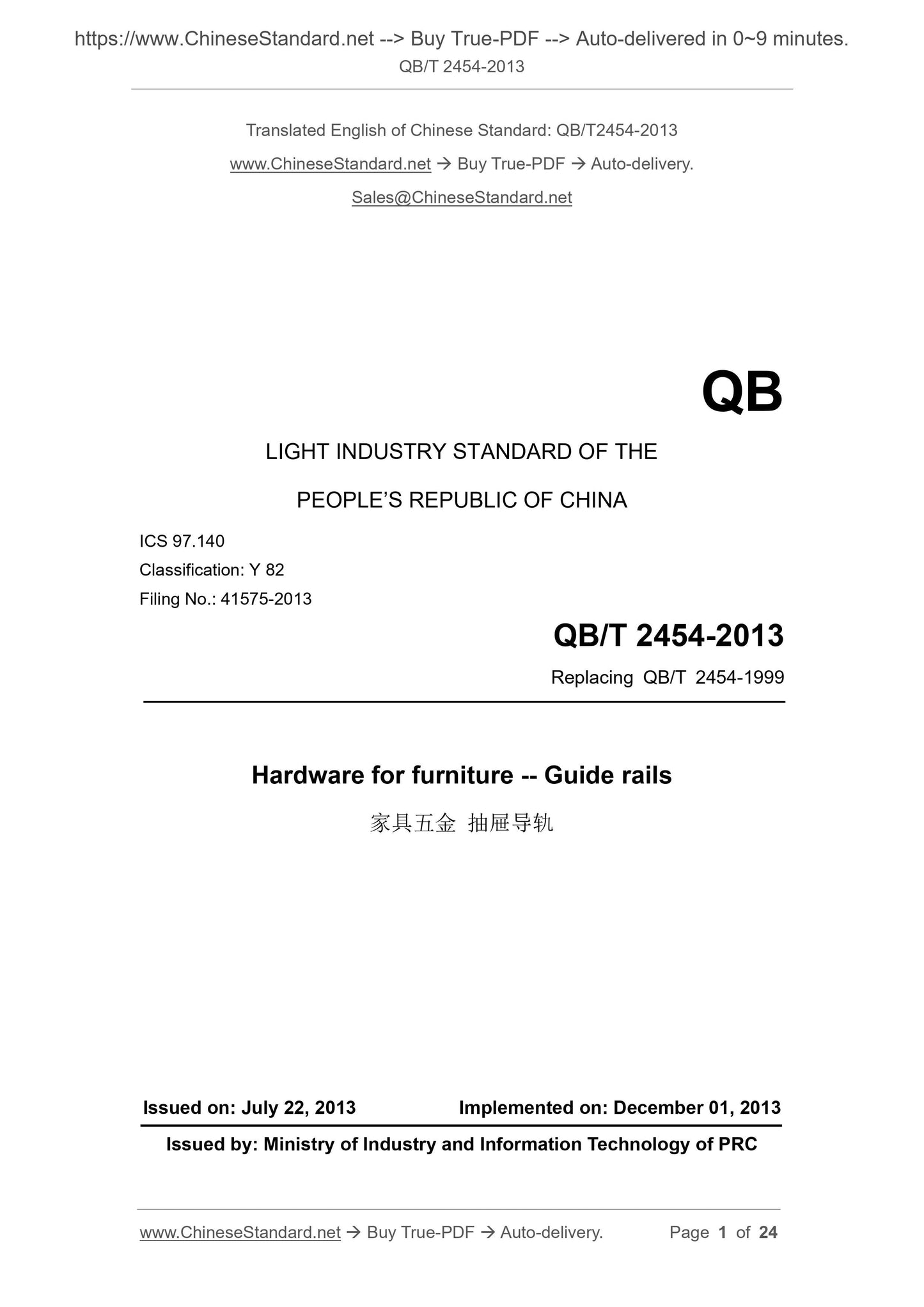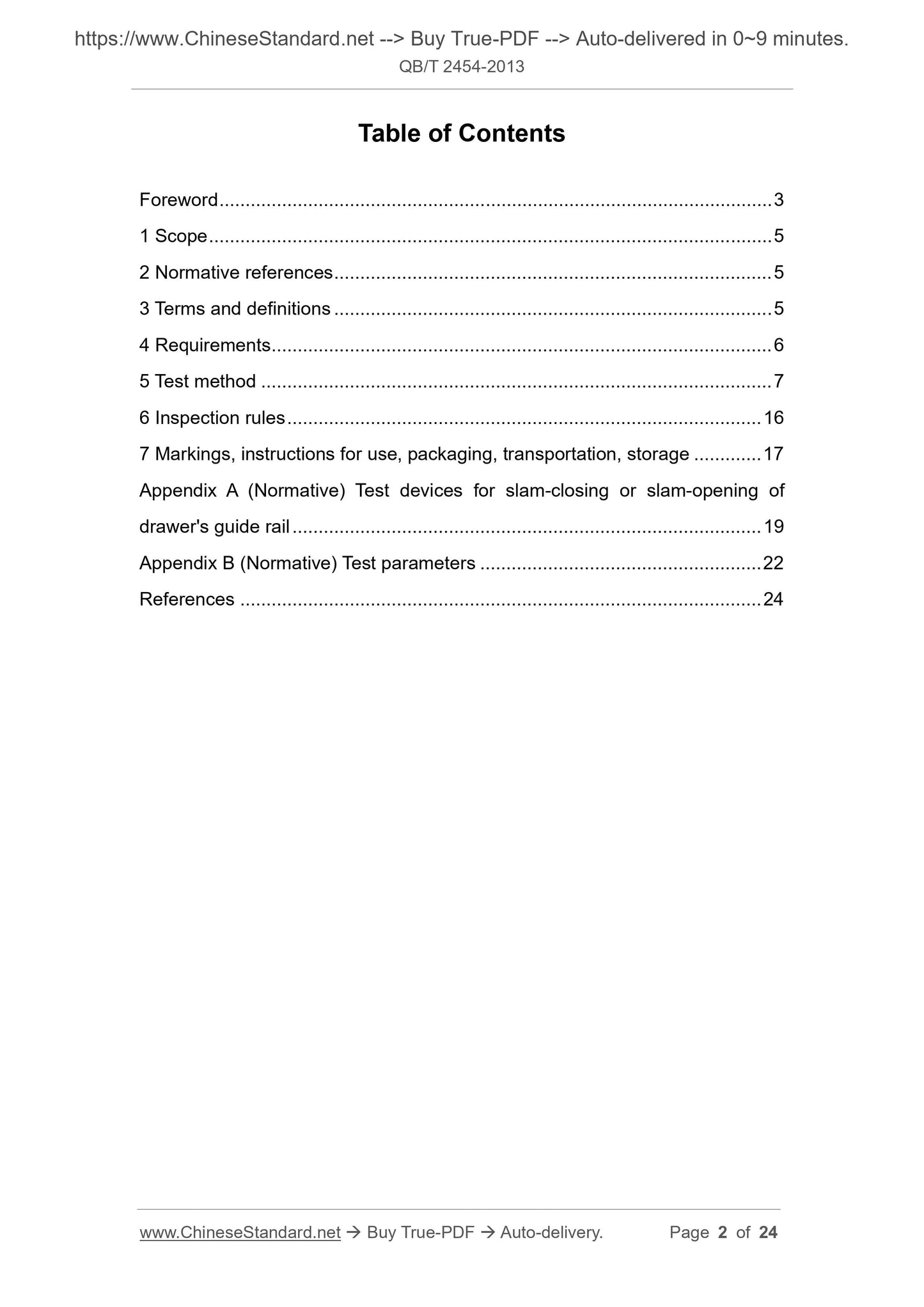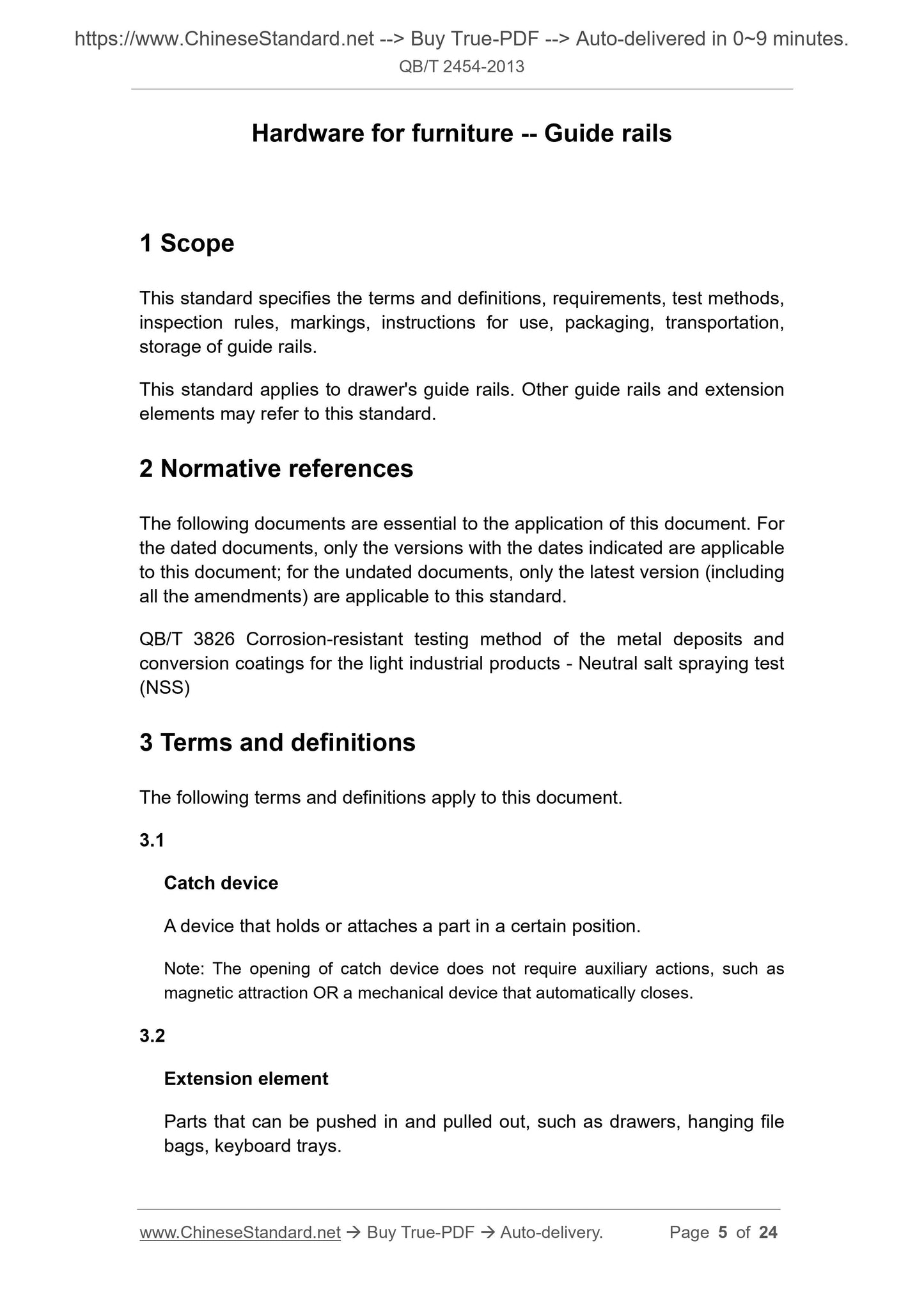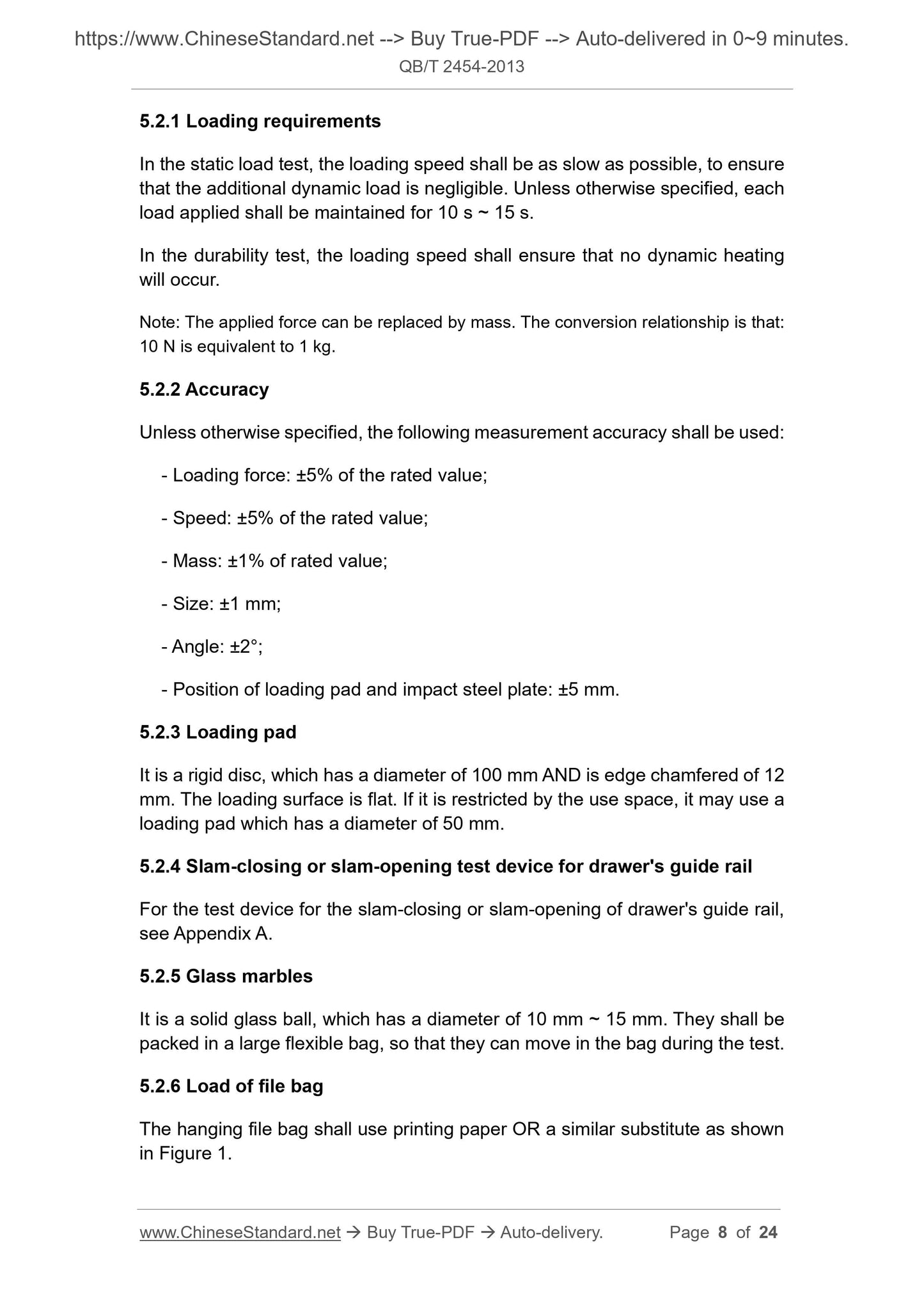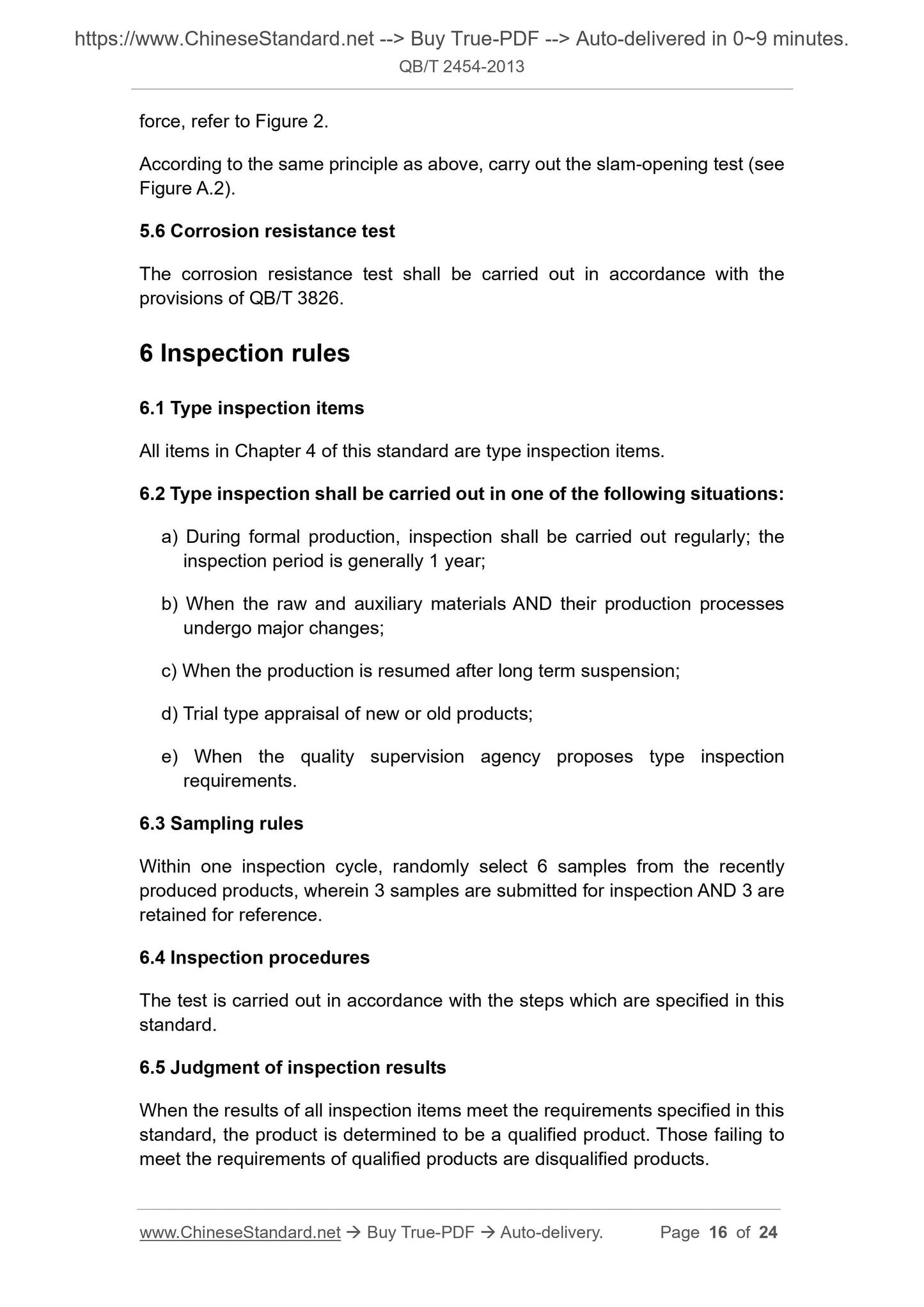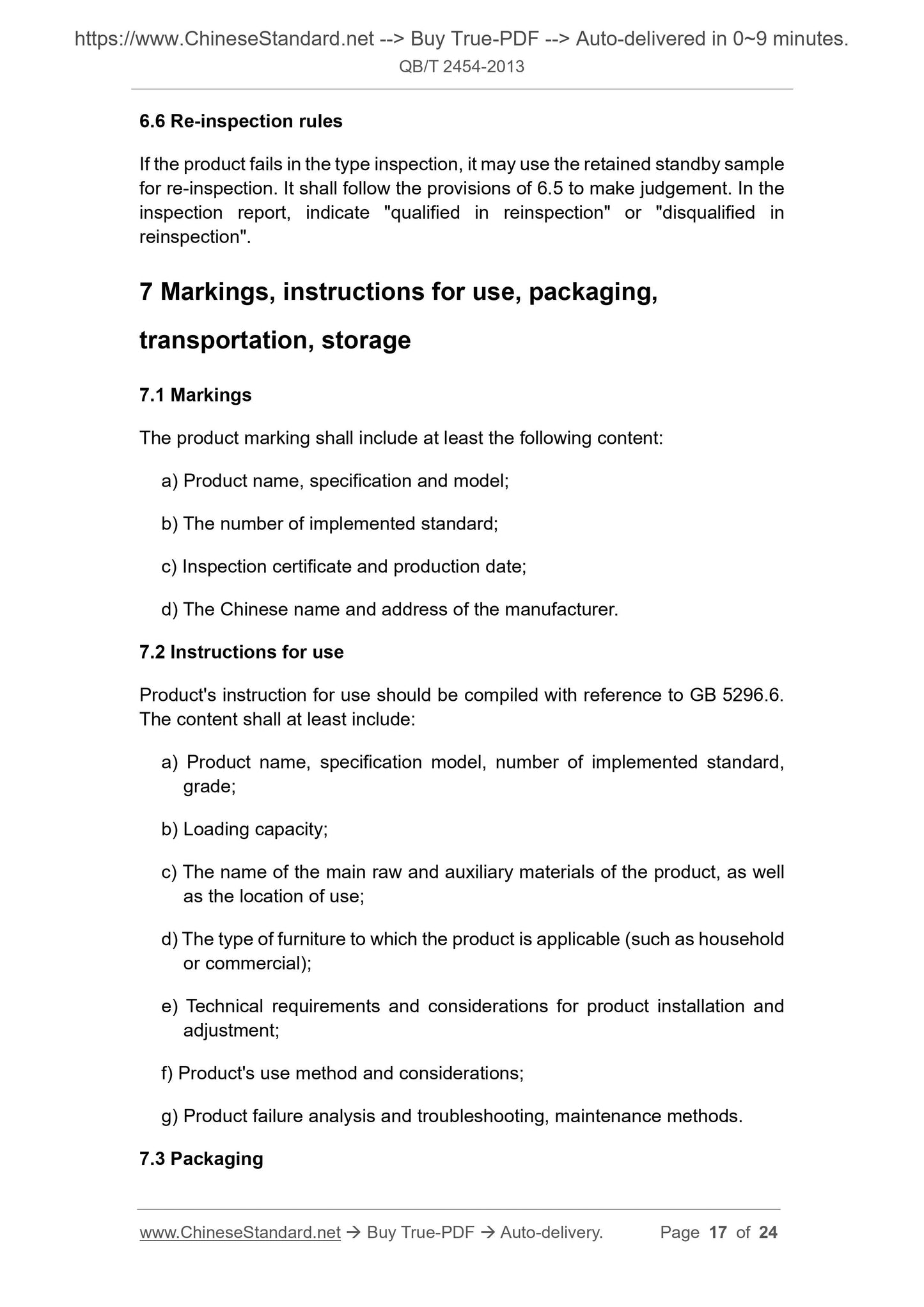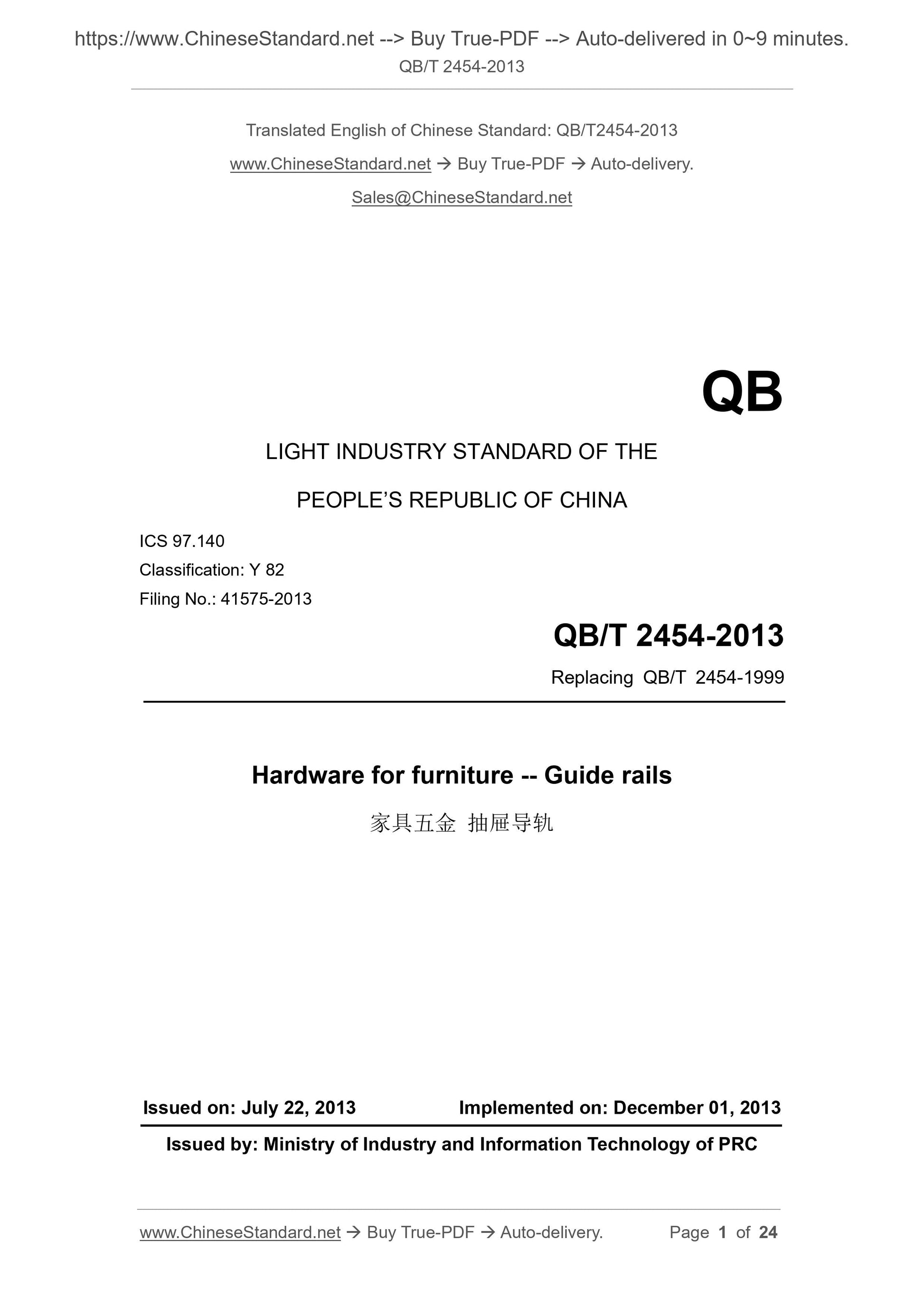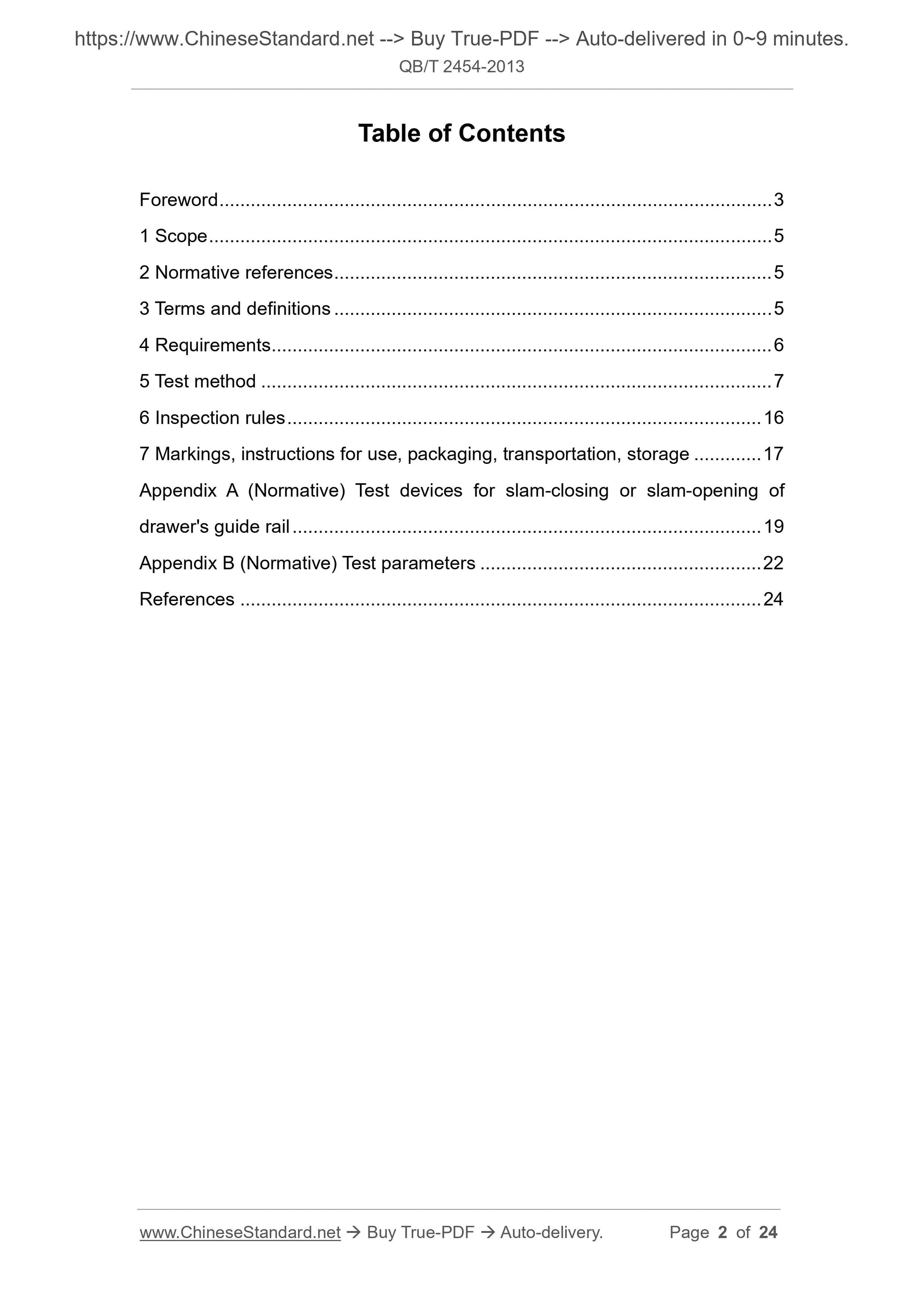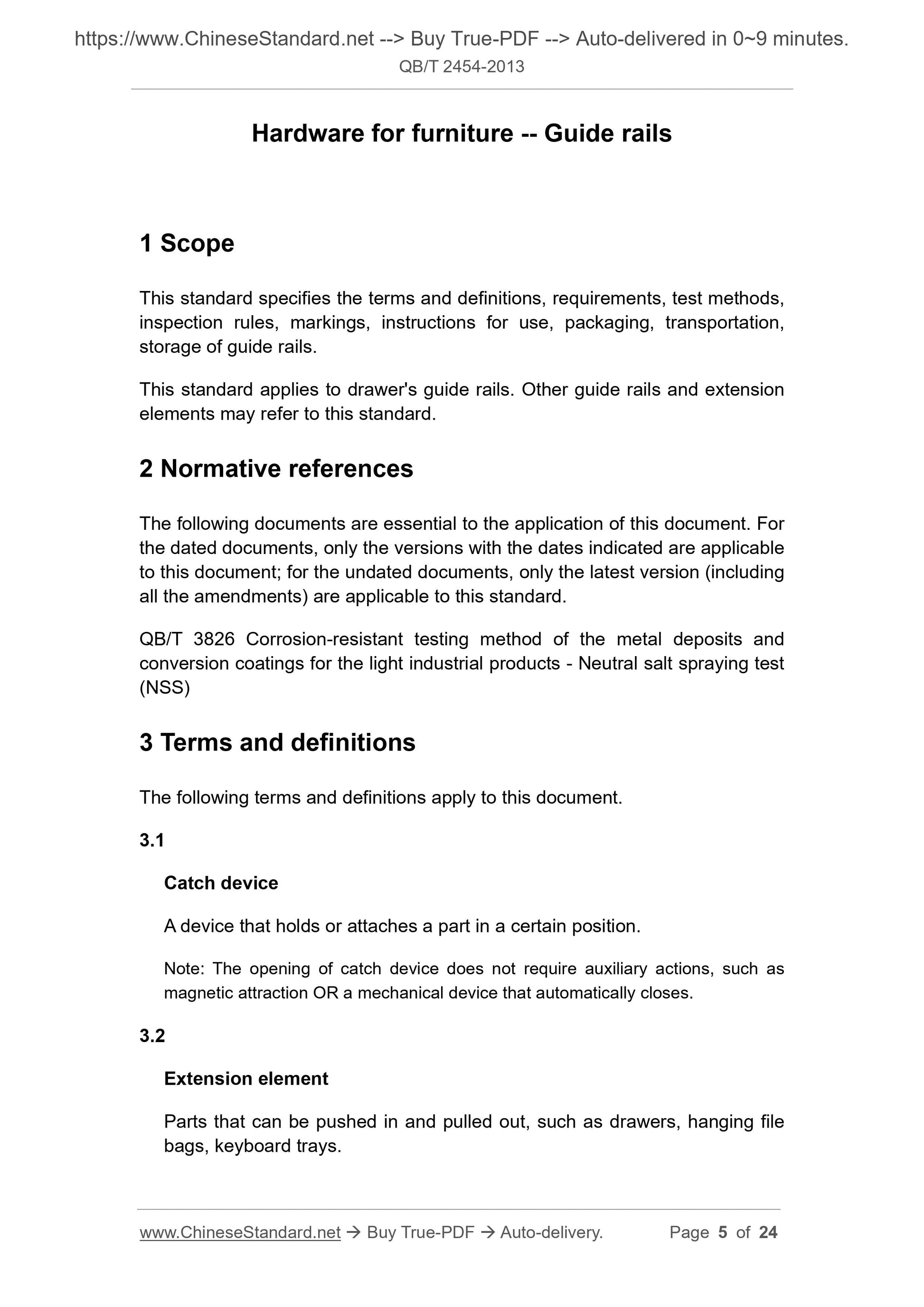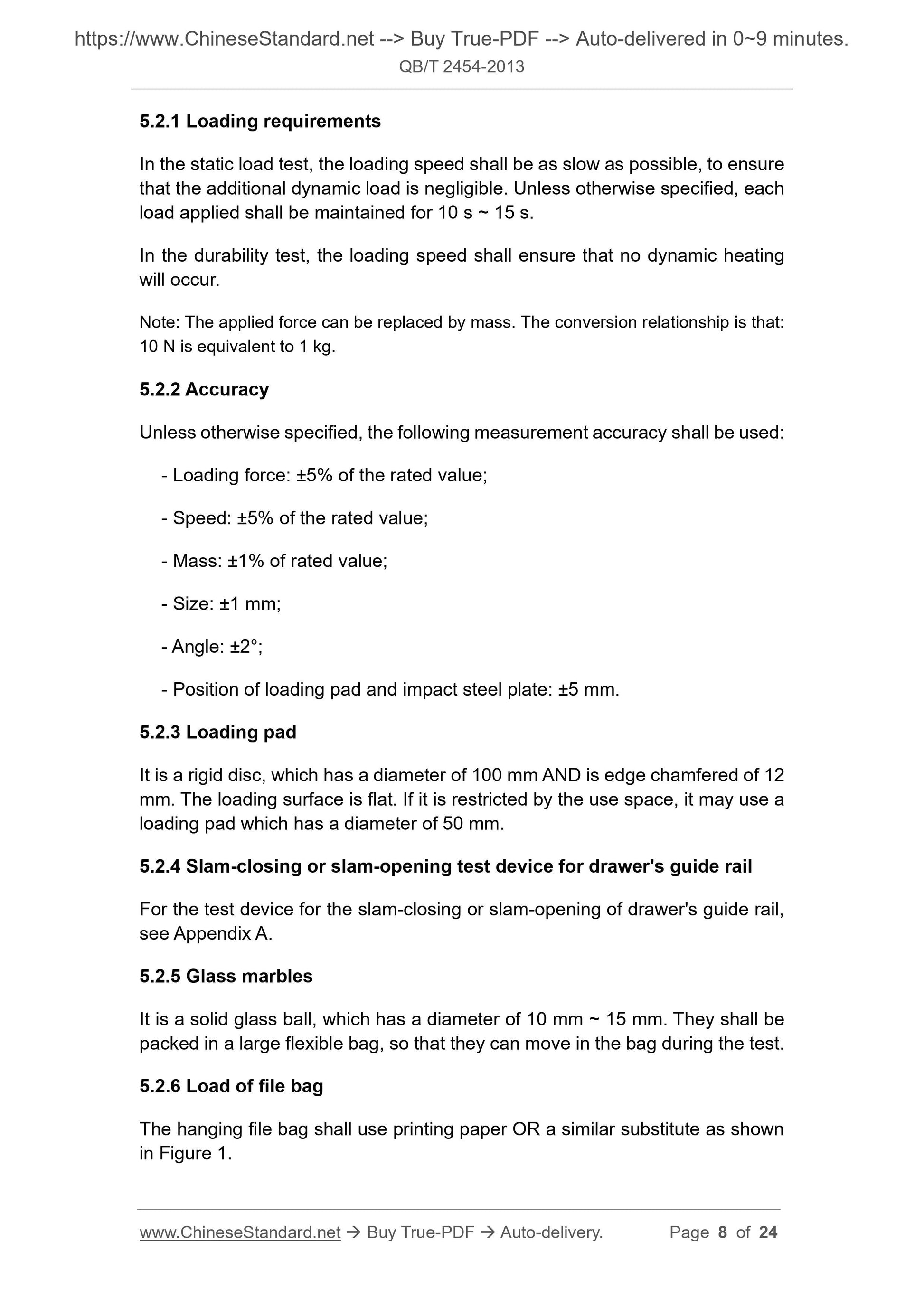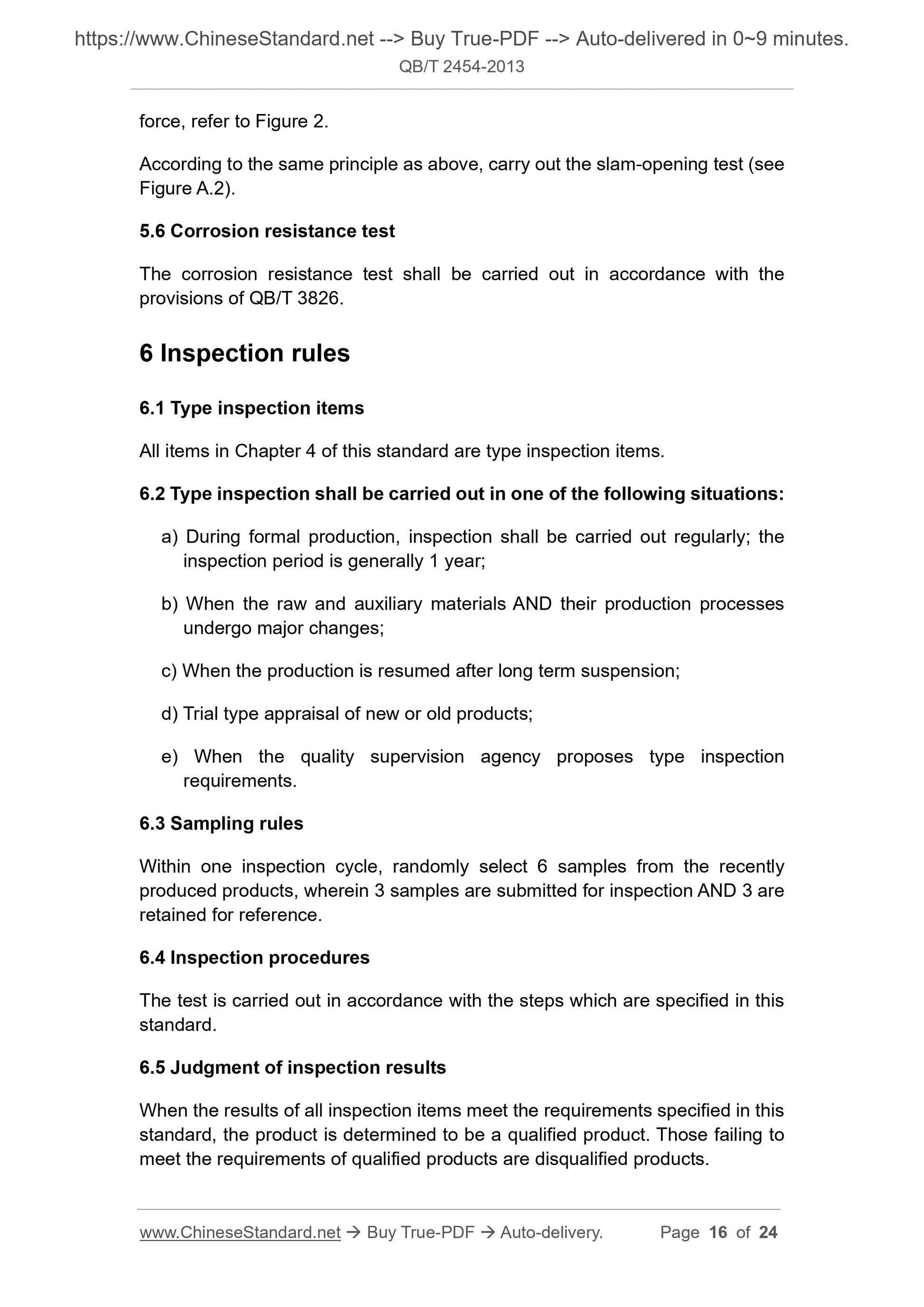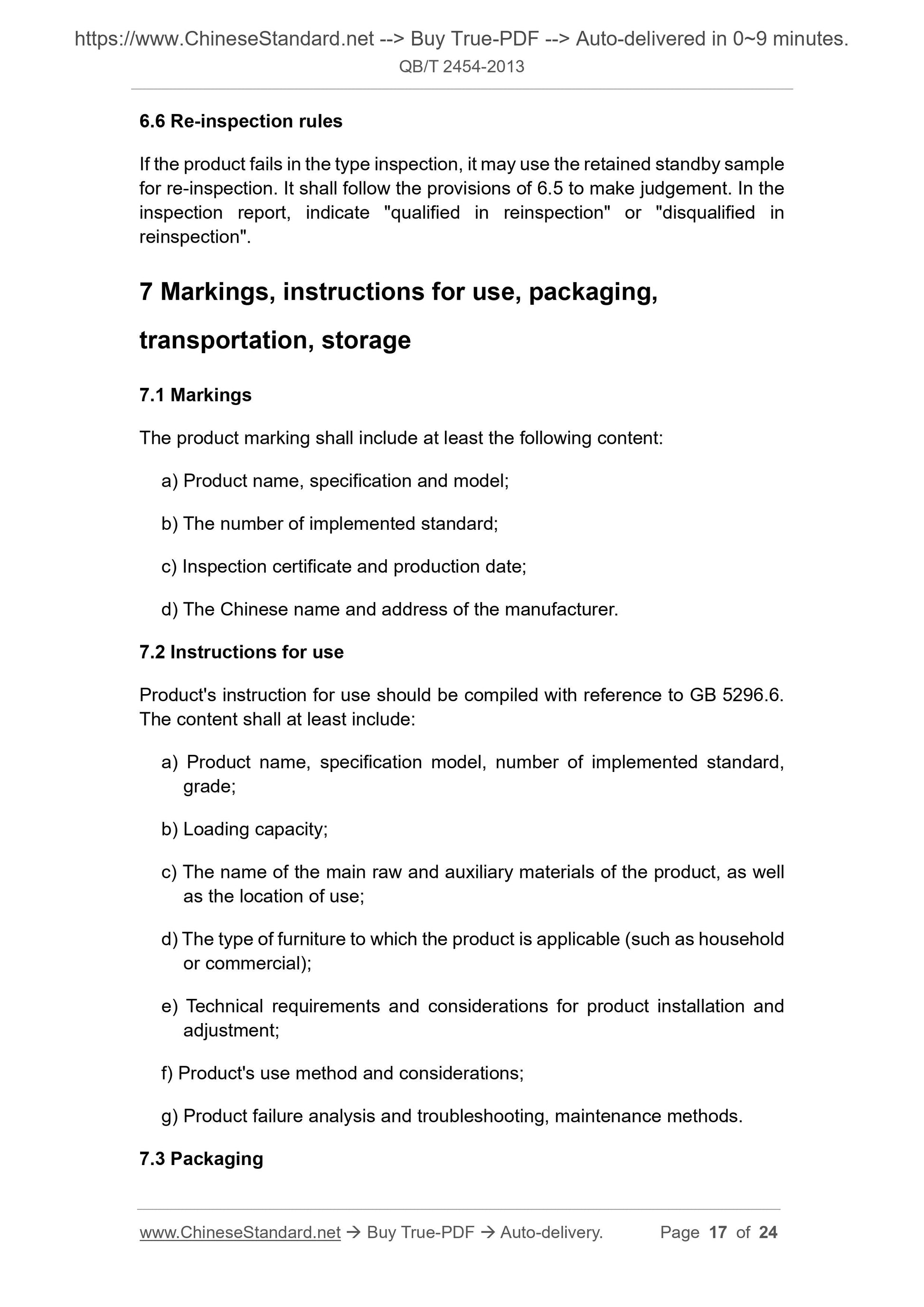1
/
of
6
www.ChineseStandard.us -- Field Test Asia Pte. Ltd.
QB/T 2454-2013 English PDF (QB/T2454-2013)
QB/T 2454-2013 English PDF (QB/T2454-2013)
Regular price
$105.00
Regular price
Sale price
$105.00
Unit price
/
per
Shipping calculated at checkout.
Couldn't load pickup availability
QB/T 2454-2013: Hardware for furniture - Guide rails
Delivery: 9 seconds. Download (and Email) true-PDF + Invoice.Get Quotation: Click QB/T 2454-2013 (Self-service in 1-minute)
Newer / historical versions: QB/T 2454-2013
Preview True-PDF
Scope
This standard specifies the terms and definitions, requirements, test methods,inspection rules, markings, instructions for use, packaging, transportation,
storage of guide rails.
This standard applies to drawer's guide rails. Other guide rails and extension
elements may refer to this standard.
Basic Data
| Standard ID | QB/T 2454-2013 (QB/T2454-2013) |
| Description (Translated English) | Hardware for furniture - Guide rails |
| Sector / Industry | Light Industry Standard (Recommended) |
| Classification of Chinese Standard | Y82 |
| Classification of International Standard | 97.140 |
| Word Count Estimation | 17,144 |
| Older Standard (superseded by this standard) | QB/T 2454-1999 |
| Quoted Standard | QB/T 3826 |
| Regulation (derived from) | Ministry of Industry and Information Notice No. 38 of 2013; industry standard for filing Notice 2013 No. 9 (No. 165 overall) |
| Issuing agency(ies) | Ministry of Industry and Information Technology |
| Summary | This standard specifies the terms and definitions drawer rails, requirements, test methods, inspection rules, marking, instructions, packaging, transportation and storage. This standard applies to drawer rails, sliding rails and other components can be im |
Share
